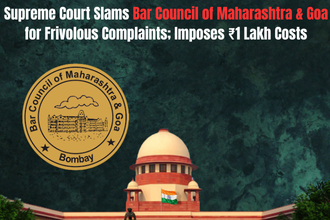In a highly unusual yet instructive incident, a U.S. federal court struck off an entire legal pleading after discovering a cartoon dragon watermark on every page of the document. The dragon, donned in a blue suit, was the logo of the law firm Dragon Lawyers PC—a firm that had filed the complaint on behalf of a plaintiff in a civil matter.
The case, filed in the Western District of Michigan, was presided over by United States Magistrate Judge Ray Kent, who issued a scathing order rebuking the firm’s choice of using a cartoon watermark in formal legal documents. The matter has since gained wide attention, sparking discussions on courtroom decorum, legal professionalism, and the boundaries of branding in law practice.
The Incident: A Dragon in the Courtroom
The complaint in question was filed by Dragon Lawyers PC, a law firm that apparently incorporated its branding—a cartoon dragon dressed in a suit—into the background of every page of the legal document. While some may see it as an innocuous or even quirky branding effort, Judge Kent saw it as a serious breach of courtroom decorum and professionalism.
Describing the watermark as “distracting, juvenile, and impertinent,” the Judge didn’t mince words. He reminded the legal fraternity that “the Court is not a cartoon,” emphasizing the formal nature of court proceedings and filings.
As per Rule 12(f) of the Federal Rules of Civil Procedure, the court holds the authority to strike from a pleading any “redundant, immaterial, impertinent, or scandalous matter.” Invoking this rule, the judge issued an order striking the entire complaint filed by the plaintiff and required that a corrected version—free from cartoonish branding—be submitted by May 5, 2025.
The Court’s Order: Serious Implications for Legal Practice
The official order reads in part:
“IT IS ORDERED that plaintiff’s complaint (ECF No. 1) is STRICKEN. Plaintiff is directed to file an amended complaint, containing the same allegations as the original complaint, without the cartoon dragon by no later than May 5, 2025.”
“IT IS FURTHER ORDERED that plaintiff shall not file any other documents with the cartoon dragon or other inappropriate content.”
This directive carries significant implications for law firms, especially those that may use creative branding elements in their documentation. While branding in client communications and marketing materials may be acceptable—even encouraged—it clearly does not extend to official court filings.
Professionalism in Legal Filings: Where’s the Line?
The incident raises an important question for legal practitioners around the world: how much personalization or branding is too much in formal legal documents?
Traditionally, court filings are expected to maintain a strict standard of formality, neutrality, and clarity. Judges and court officials must be able to review pleadings without distraction, confusion, or the impression that the seriousness of the proceedings is being undermined.
In this case, Judge Kent explicitly found the watermark to be not only distracting but also unprofessional. It was viewed as undermining the dignity of the judicial process, hence his decision to strike the pleading in its entirety rather than merely asking for a corrected version informally.
What Law Firms Can Learn from This Case
This ruling should serve as a cautionary tale for law firms, particularly those experimenting with modern branding strategies. Here are a few key lessons:
- Court Documents Are Not Marketing Materials
Branding should be confined to websites, business cards, and client communications—not court filings. Courts demand an environment of solemnity and respect. - Follow Formatting Standards Strictly
Even seemingly minor elements such as logos, footers, and page styling must adhere to jurisdiction-specific filing guidelines. Any deviation can result in filings being rejected or, as seen here, completely struck off the record. - Maintain Focus on Legal Content
Judges need to focus on the substance of legal arguments. Any extraneous element that distracts from this purpose—whether it’s unnecessary design or inappropriate language—can draw judicial ire. - Avoid Personalization That Can Appear Flippant
While some law firms pride themselves on creative branding, they must draw a line when it comes to professional documentation. Anything that could be perceived as flippant, juvenile, or irreverent should be avoided.
Global Relevance: A Reminder Across Jurisdictions
While this ruling originates from the United States, its implications resonate globally. In India, for instance, courts have been similarly strict about the decorum of pleadings, with formatting errors and non-standard submissions often resulting in delays or dismissals.
In the UK and EU legal systems, formalism remains a cornerstone of legal practice. This case serves as a universal reminder to legal practitioners that no matter how informal or client-friendly a firm’s brand may be, courtrooms are governed by their own code of conduct—and it must be followed diligently.
Public Reactions: Amusement, Concern, and Debate
The incident has also sparked reactions ranging from amusement to concern on social media and legal forums. While some users criticized the judge’s reaction as overly stern, others pointed out that allowing such practices could open the floodgates to even more inappropriate filings.
Imagine a pleading with a superhero or cartoon dog watermark—where would the line be drawn then? Most legal professionals agree that a consistent standard of seriousness is essential for maintaining public trust in judicial systems.
The Road Ahead for Dragon Lawyers PC
While the firm still has the opportunity to refile the complaint with the same legal content, this rebuke could impact its public reputation. It remains to be seen whether the firm will revise its branding strategy or simply restrict its dragon-themed designs to non-courtroom materials.
Conclusion
The decision by U.S. Magistrate Judge Ray Kent to strike off a complaint for featuring a cartoon dragon watermark is a sharp but essential reminder that legal professionalism must not be compromised, even in the era of modern branding. Law firms across the world should take note: the courtroom is a space of gravity and decorum, not creativity and logos.
As branding becomes an increasingly important part of legal practice, so too must there be clear boundaries between marketing and litigation. The gavel has spoken—and it demands respect, not dragons.



